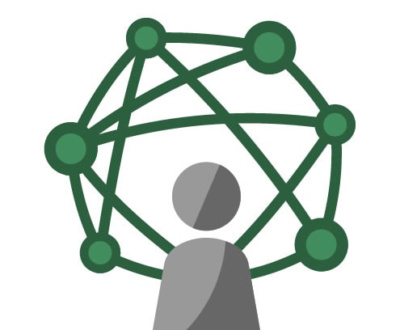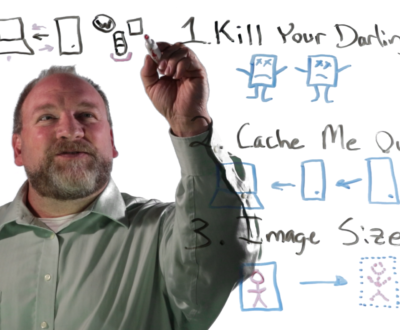Always Avoid These 3 Stress-Inducing Communication Blunders
- May 18, 2017
- Lists, Marketing Agency
There are so many things to consider in web design; so many technical issues to nail down, so many marketing and content challenges to suss out, it’s no surprise that communication with a new client can be confusing and frustrating for all parties. The stress referred to in the title is the kind which can develop between web developers and clients whenever new projects are initiated, and often at various times throughout a development cycle. But here’s the deal: it’s your fault.
100% of the time, you control your own fate when it comes to client communications. This can be especially true when the client is a first-time customer whom you’ve not worked with before. New clients may not know what they want or may have unrealistic expectations, and so greater potential exists for scope creep, lack of clear direction, and all sorts of other misunderstandings. But, there is good news. A great deal of project stress can be eliminated or mitigated, simply by observing some of the tips outlined below.
Letting Murky Expectations Linger
The first prerequisite should be to have clear two-way communication between developer and client about what the deliverables must be on the project. To help establish this kind of clear communication, develop a plan which details as much information about the project as possible. Many successful web agencies create a client questionnaire which asks specific questions about what they have in mind, so that surprises can be kept to a minimum.
This piece is essential. If you don’t have a clear picture of your client’s expectations, how will you know if they are being realistic about what you will deliver?
Responses from that questionnaire should help you develop a business proposal for the client, and any misconceptions on your part can be resolved through discussion of that proposal. This is also where you are essentially outlining what the client’s expectations should be. Your proposal should be detailed enough that false or murky expectations can be exposed and addressed. Once this phase is accomplished, you should have all the information needed to define the scope of the project, and refine your bid as needed.
Force-feeding Deliverables and Expectations
This is one of the single biggest areas of disagreement and stress which might develop on a web development project, so it makes sense to give it a great deal of attention. Obviously the main deliverable will be a finished website for the client – but exactly which components should be included on that website? As a web design expert, you know what you know. You know what you can deliver. You know what is hard to deliver.
Conveying this information to the client is a critical first step, but it’s not the end of the debate. Requirements gathering is a two-way street with your client. If you pooh pooh every wish or desire of the client as unrealistic or “bad for the web” then you put your agency at risk of being fired before you even start.
Listening to your clients, even when their expectations are not realistic, is fundamental to your success. You can always coax alternatives out of your client if you have a clear understanding of why they are asking for what they are. But blithely ignore their wishes in lieu of your own expertise at your own risk.
Avoid making assumptions
If you have any questions in your mind about the website you’re developing, it’s an absolute must that you get it clarified with the client, right up front. If you don’t, you leave yourself open to major re-work and a significant waste of time, which of course will impact your profitability.
One very common source of stress in this area arises from the fact that your contact client may not be the actual decision-maker at his/her company, and the opinions and ideas given to you may differ slightly or significantly from a superior’s concept. This is something you should find out right at the outset, so you know who you have to please, and can incorporate that requirement into your overall objectives.
Another assumption that goes hand-in-hand with our previous blunders is assuming that your client understands the web and understands their business in a way that leads to realistic goals and expectations for the project. As an example, we regularly take on clients who start with, “All I need is a business card online. Sweet and simple. Nothing complicated (and therefore hopefully cheap?)” but we’ve experienced this enough times to probe further:
Us: “So you don’t need increased traffic or a website that will entice people to contact you? Just a resume of your business?”
Them: “Oh I didn’t say that. We definitely want new business from our website.”
This can be a frustrating exchange, but it’s one to have at the project start, rather than 6 months down the road when the client starts Googling their business, and realizes this element of web marketing was not prioritized, per their own instructions.
Conclusion
Web development projects can sometimes be doomed right from the outset if objectives are not clearly communicated by the client, and that means you have to ensure that this clear communication is established before work is even begun.
And frankly, you may have to tease this information out of your client with a few passes before things are properly clarified for both parties. It’s on you to ensure this is done. You are the expert in this field, after all, and your client is looking to you to show them what they may not already know.
By avoiding the blunders described above, you’ll have a much better chance to deliver a project on time, on-budget, and as expected by your client.
Bill lives and plays in Fort Collins, Colorado. After a fulfilling career for a Fortune 50 company, Bill founded Colorado Web Design in 2012 with a passion for creative digital solutions for business. Bill likes to manage a wide variety of projects and tasks for his clients in the digital space. The creative elements of website design, application design, and marketing are enough to keep anyone busy and engaged, but wiping the slate clean over and over at the start of new projects comes with its own challenges. "I like to start with really good client communication sessions. The rest is easy if you get started in the right way." He plays tennis, bikes, and hikes and then undoes all of that with too much delicious food and TV watching.
About Colorado Web Design
We've been building websites for Colorado businesses since 2002. We are a small team of dedicated individuals who love the challenge of each new marketing project. We live and play in northern Colorado.












